The SaaSquatch Guide to Growth Automation
Let’s take a quick step back into 1980.
Americans watch helplessly as inflation creeps higher and higher. Purchasing power is going up in flames. Putting food on the table gets harder, those retirement funds are worth less and less. Inflated to 10%, the dollar’s price has everyone worrying – and buying things up before they go up in price. Like squirrels before winter, nervous consumers are packing away stores of goods.
Sadly, this loop of fear is driving prices higher. All-consuming fear feeds into to a rapid, debilitating purchasing cycle. Prices inflate and employees ask the boss for raise. The boss complies but then must raise prices. The result? A self-fulfilling prophecy of inflationary prices.
But Paul Volcker, the newly appointed Federal Reserve Chairman, is intent to fix the economy. His way. Traditionally, inflation halts once you stop printing money. The presses are off, yet things just keep getting worse! Volcker’s iced the economy, but the States are in a recession now too. Volcker’s popularity hits an all-time low.
But he’s dedicated to his principles, cool and collected. Winter is coming, well, it’s already here – but the Fed Chair understands that a frozen economy needs to thaw before financial security springs anew.
So how did Volcker end inflation?
He showed the American people that the problem was all in their heads. He didn’t succumb to convention or pressure and stood firm. This is what allowed the dollar correct itself. And made people stop buying. America had to stop worrying and just accept things as they were for a season.
By the end of 1981, inflation dipped to 9% – then 6% – and finally 4%. Since the 80s, inflation has been effectively non-existent.
Why tell you this?
Because handling growth – whether for your marketing efforts or for a depreciating national currency – requires a long-term perspective. Marketers today are sticking with their customers for the duration and benefiting from their dedication.
Just as Volcker hung true and won big, today’s growth marketers are hanging their hats on customer experience and lifecycle management.
So today we’re introducing the SaaSquatch Guide to Growth Automation. Much like growth marketing, growth automation takes a holistic view of the customer relationship and helps marketers run campaigns to improve each phase of the customer lifecycle.
Whether it’s encouraging customer advocacy, increasing customer purchase frequency or running a churn reduction campaign; growth automation takes a full-funnel approach towards developing and retaining valuable customer relationships.
Because it’s perfectly suited to analyzing and optimizing each stage of the customer journey, we’ll look at Dave McClure’s Pirate Metrics framework as the perfect compliment to this overarching growth mindset.
You don’t have to be Fed Chairman to take control of growth at your organization. Just understand a few key concepts and practice them judiciously and the growth will follow. Read on to find out how.
To understand growth automation terms, we need to first understand growth marketing and growth hacking. As widespread as these terms have become, you may have overlooked them until now.
Growth marketing thinks about the whole funnel. Growth marketers take a holistic approach here, focusing on all aspects of product, marketing, sales, and support throughout the entire customer lifecycle.
The goal? Increasing revenue per customer by optimizing every aspect of the customer experience.
It’s important to remember: growth without retention is not growth. Instead, it becomes a vanity metric that makes us feel good in the short term, only to deflate later.
Growth marketers practice larger customer lifecycle initiatives and smaller creative tactics to drive exponential results for their company.
“My path to learning growth was a happy accident. Before I really focused on growth I spent two years learning to code (albeit poorly), 3 years learning product management, 3 years on user acquisition. Without those diverse experiences there is no way I would understand how the pieces of growth come together and my learning is very far from over.” — Brian Balfour, Head of Growth at Hubspot
For example, Dropbox’s invite-a-friend incentives, Uber’s reciprocal rewards ride program, Udemy’s loading 5,000 classes online like lightning all showcase growth hacking tactics and growth design. Successful campaigns like these ran off the growth chart so hard and to the right that they were practically outside of the box before anyone took notice.
So what’s growth automation then?
Growth automation is any of the full-funnel campaigns growth marketers run to achieve their objectives. The growth mindset is all about attracting and keeping valuable customers by engaging current customers with creative campaigns you can turn them into loyal customers.
To be clear:
- Growth marketing is a long-term strategy focusing initiatives that improve the customer experience.
- Growth hacking refers to experiment-driven tactics targeting specific stages of the customer lifecycle.
- Growth automation is any campaign that full-funnel marketers use to increase customer lifetime value.
How to Use Pirate Metrics to Define a Growth Automation Campaign
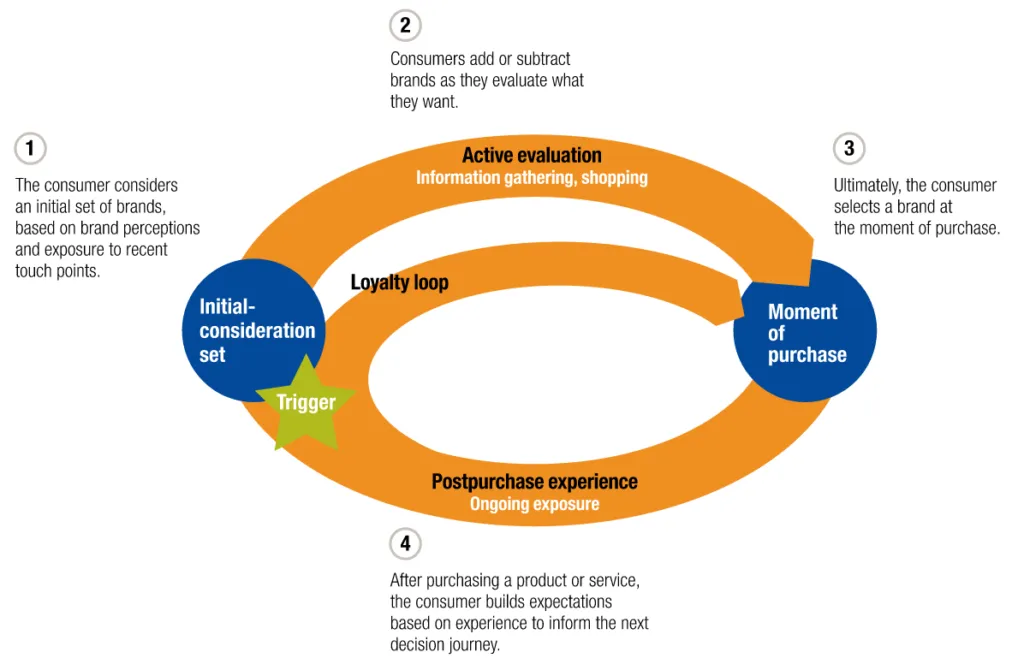
(Source)
We’re used to thinking of funnels as trickle-down marketing, a slow drop from top to bottom via a steadily narrowing angle of “funnel geometry.” But growth teams know that growth anywhere in the funnel affects the overall growth rate and is a net positive. Thus, they’re widening the funnel everywhere. What’s good for the goose is good for the gander, right?
Typically, the upper levels are involved in expanding reach and awareness while lower levels deal with nurturing and revenue. Awareness and acquisition are for marketers, as it’s simpler to develop department KPIs in this area.
Taking care of activation, retention, revenue, and referral often falls to a combination of sales, engineering, product and customer success departments. And the ugly truth is, some companies just neglect certain areas altogether.
But this duality of segments – reach and nurturing – is not growth-oriented. These layers must now interact with another, as strategies that retain customers do not stop at acquisition.
Rather, these initiatives stretch from the top to the bottom and loop back to the top again with customer loyalty as the ultimate goal. Campaigns that prioritize customer experience throughout find ways to remove friction points by making the end user experience seamless and authentic.
How so?
Enter Pirate Metrics. Imagine you’re a pirate sailing the seven seas. There’s a breeze in your face and a parrot on your shoulder. You may or may not be drunk on exotic rum. Say it with me now,
“AARRR!”
This onomatopoeia stands for: “Acquisition, Activation, Revenue, Retention, Referral.” It’s an analytic framework for categorizing metrics relevant to customer retention and full funnel growth. If you understand each phase of the lifecycle – and the strategies and tactics that are required to make them effective, you can affect growth automation at your organization. Let’s look at each phase and what it means for you and your expansion potential.
If you understand each phase of the lifecycle – and the strategies and tactics that are required to make them effective, you can affect growth automation at your organization. Let’s look at each phase and what it means for you and your expansion potential.
Acquisition
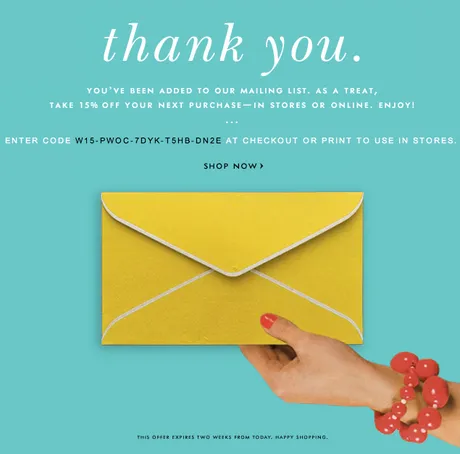
(Source)
The goals of customer acquisition campaigns vary by company but always come down to driving top of funnel metrics like traffic, leads and first time purchases. Because this is the first contact point between your brand and the potential customer, acquisition is a great place to start measuring engagement.
Women’s retailer Kate Spade extends a customer lifecycle email invitation for users to differentiate themselves. By offering a promo discount, the brand starts off by welcoming new users to buy while simultaneously making efforts to segment their email list.
Activation
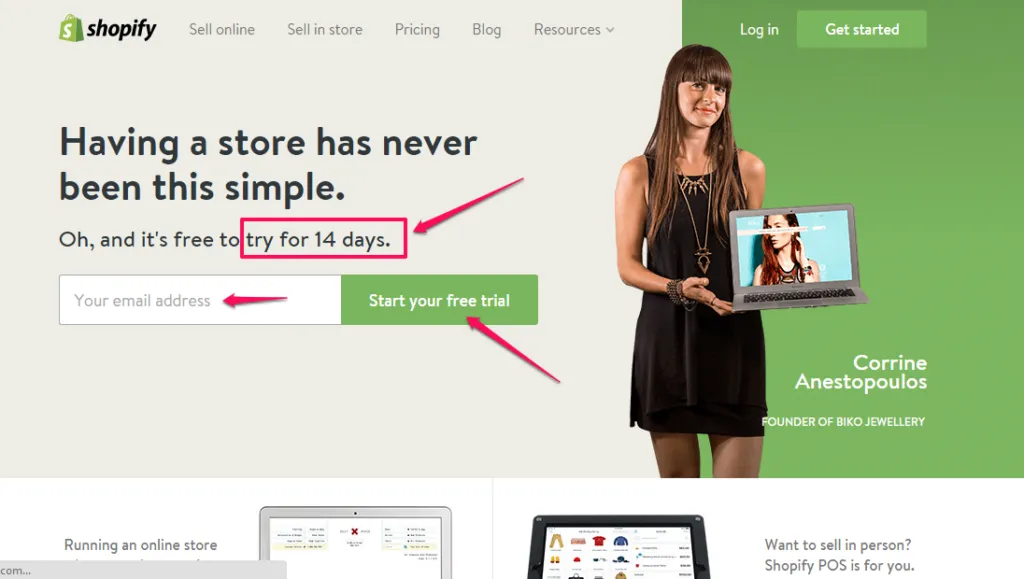
(Source)
The activation stage is about signups and providing a great first experience. Getting users through the activation phase and using your product can be harder than it sounds, as complex UI and onboarding pitfalls can make it hard on newcomers. As you’re always angling for that WOW! Moment, pay close attention to these areas.
According to Econsultancy, 71% of consumers have ended their relationship with a company due to poor customer service. So investing in assistance and guidance, such as chat bots and a good FAQ page, can be essential. Be sure to look at your product features, feature adoption, customer success, landing pages – and field a few surveys – to get a true sense of how growth works in this phase.
We can see here that Shopify allows a free trial. Users get a chance to experience the premium features and this translates into future happy customers that upgrade after developing an appreciation for their service.
Revenue
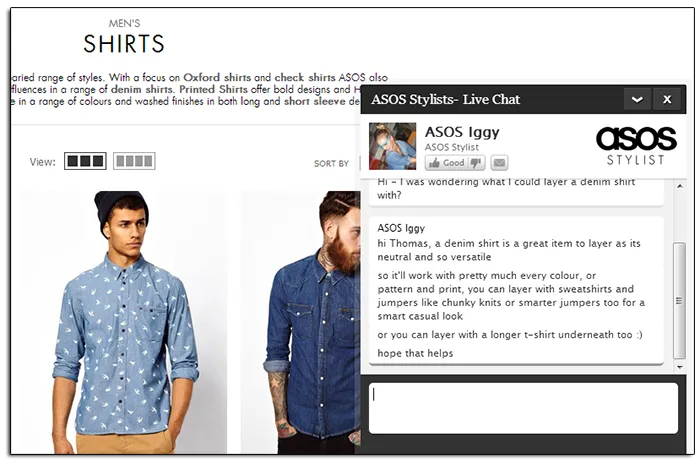
(Source)
Congrats my pirate pal! People are paying for your product because they see the value. Now is the time to reaffirm that value and really dazzle your users to earn their longtime patronage. Be sure your customer support is stellar here, nor should you be afraid to send out surveys after sufficient time has passed.
You want to stand behind what you’ve sold and give every reason for upsells or cross-sells. You can look at cart abandonment, checkout flow, and product pages to measure of the revenue stage UX. Being detail-oriented in this will return huge dividends in terms of customer loyalty and brand ambassadorship.
Here we see British mega-retailer ASOS gives customers an online shopping experience complete with personal shoppers to pick out perfect outfits. Such premium assistance through the buying phase is sure to reduce cart abandonment and create higher revenues from more satisfied consumers.
Retention

(Source)
Retention is about gaining incremental revenue from an existing customer. Return users are the goal, as a 5% reduction in churn can yield a 25-125% increase in profitability. Product stickiness plays a big part, as does customer support. Fall back on customer lifecycle marketing here, sticking with nurturing, surveys, and taking into account your Net Promoter Score.
Sending customers quality post-sale content, emails, event invites, and time-based initiatives can directly contribute to an upsell or cross-sell. But don’t rush things though – you’re looking to engaged potentially lifelong customers here.
Amazon’s retention lifecycle emails are a great way to bookmark recent purchases. By providing a channel for feedback, the company helps improve it’s customer experience via valuable feedback and cultivates great user-generated content too. Product reviews naturally brings users back into a purchasing mindset and nearer to their shopping cart to fulfil such thinking.
Referrals
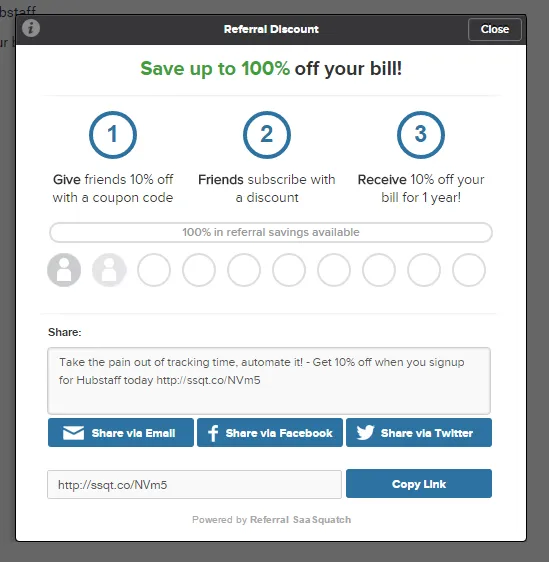
(Source)
Ah, the reward stage. If your growth automation campaign is a success, customers will arrive with a smile on their face and good will in their hearts. Referral ROI is huge, as these users are in the market for reselling but are active and able to refer their most likely friends. And everyone loves to be the one who introduces their friend to something great.
Above we see Hubstaff using the consumer psychology of altruism and double-sided rewards to drive their referral program. The brand makes referrals easy by using a progress bar – smartly using on the utility principle – and encourages users to make a referral with an easy to understand 1-2-3 description.
Grow, Growing, Grown
Growth automation is the opposite of inflation. After all, who wants to watch their user base churn and their bottom line disappear into thin air?
Rather than focusing on vanity metrics like basic acquisition, growth automation pairs with Pirate Metrics to focus upon each and every phase of the customer lifecycle and deliver exponential revenue growth.
Taking cues from growth marketing’s full funnel emphasis and growth hacking tactics, use this framework to align your objectives from top to bottom and deliver a winning customer experience every time.
Once you’ve established the means to provide for customers, assess your progress and profits with key funnel metrics, shoring up any weaknesses as they appear. This way, your marketing funnel won’t be a leaky bucket or an inflated fantasy. It’ll be a measurable dynamo for growth that nurtures itself from within.
Extra Resources:
What is Lifecycle Marketing?: 55 CMOs and VPs Share Their Strategies